- Home
- Maurice Magre
Priscilla of Alexandria
Priscilla of Alexandria Read online
Priscilla of Alexandria
and Other Stories
by
Maurice Magre
Translated, annotated and introduced by
Brian Stableford
A Black Coat Press Book
TABLE OF CONTENTS
Introduction 4
COURTESANS’ LIVES 13
Preface 13
Hermanossa 17
Priscilla of Alexandria 34
Jeanne the Lascivious 56
Lorenza the Venetian 61
Bagawali 83
Julia the Animal-Tamer 92
Hiao the Korean 99
PRISCILLA OF ALEXANDRIA 120
FRENCH SCIENCE FICTION & FANTASY COLLECTION 391
BY THE SAME AUTHOR 399
Introduction
This is the third volume of a twelve-volume set of translations of Maurice Magre’s prose fiction. It contains translations of the original version of the story collection Vies des courtisanes, first published in Les Oeuvres Libres XXIII (1923), as “Courtesans’ Lives” plus the additional story added to the version of the collection published in volume form in 1925, and the novel Priscilla d’Alexandrie (1925), as “Priscilla of Alexandria.”
Volume One, The Marvelous Story of Claire d’Amour and Other Stories, contains translations of early short stories, including the collection Histoire merveilleuse de Claire d’Amour suivie d’autres contes merveilleux (1903) and six other stories from various sources, published between 1901 and 1913.
Volume Two, The Call of the Beast and Other Stories, contains translations of his first three works of prose fiction in volume form, Les Colombes poignardées (1917), as “Stabbed Doves,” La Tendre camarade (1918), as “The Tender Comrade” and L’Appel de la bête (1920), as “The Call of the Beast.”
Volume Four, The Angel of Lust, contains translations of the novella, La Vie amoureuse de Messaline (1925), as “The Love Life of Messalina,” the novel published as La Luxure de Grenade (1926), as “The Angel of Lust,” and the chapter from Magiciens et illuminés (1930) entitled “Christian Rosenkreutz et les Rose-croix,” as “Christian Rosenkreutz and the Rosicrucians.”
Volume Five, The Mystery of the Tiger, contains translations of the novella Le Roman de Confucius (1927), as “The Story of Confucius,” and the novel Le Mystère du tigre (1927), as “The Mystery of the Tiger.”
Volume Six, The Poison of Goa, contains translations of the novel Le Poison de Goa (1928), as “The Poison of Goa,” and the prose poems contained in Le Livre des lotus entr’ouverts (1926), as “Lotus Blossoms.”
Volume Seven, Lucifer, contains a translation of the novel originally published under the same title in 1929 and the novella La Nuit de haschich et d’opium (1929), as “The Night of Hashish and Opium.”
Volume Eight, The Blood of Toulouse, contains translations of the novel Le Sang de Toulouse (1931), as “The Blood of Toulouse,” and the chapter from Magiciens et illuminés entitled “Le Maître inconnu des Albigeois,” as “The Secret Master of the Albigensians.”
Volume Nine, The Albigensian Treasure, contains translations of the novel Le Trésor des Albigeois (1938) as “The Albigensian Treasure,” and the collection of vignettes “Communication avec la nature” from La Beauté invisible (1937), as “Communication with Nature.”
Volume Ten, Jean de Fodoas, contains translations of the novel Jean de Fodoas: aventures d’un Français à la cour de l’empereur Akbar (1939) as “Jean de Fodoas” and the chapter from Magiciens et illuminés entitled “Le Mystère des Templiers,” as “The Mystery of the Templars.”
Volume Eleven, Melusine, contains translations of the novel Mélusine, ou le secret de solitude (1941) and the collections of vignettes “Le Côté d’ombre des âmes” and “Révélation des mondes invisibles” from La Beauté invisible, as “The Dark Side of Souls” and “The Revelation of Invisible Worlds.”
Volume Twelve, The Brothers of the Virgin Gold, contains a translation of the novel Les Frères de l’or vierge, first published posthumously in 1949.
Vies des courtisanes was initially published in volume XXIII of the periodical Les Oeuvres Libres in 1923, where it was classified as “variétés inédits” [previously-unpublished miscellanea]; it consists of a collection of thematically-linked short stories. That original version was headed by a prefatory essay entitled “De la supériorité des courtisanes sur les autres femmes,” here translated as “On the Superiority of Courtesans to Other Women.” The six stories in that version were “Hermanossa, auteur du traité sur les moyens pour orienter vers le divin la volupté de l’amour physique” (“Hermanossa, author of the treatise of the means or orientate the sensuality of amour toward the divine”); “Priscilla d’Alexandrie” (“Priscilla of Alexandria”); “Jeanne la Pautonnière” (“Jeanne the Lascivious”); “Lorenza la Vénitienne” (“Lorenza the Venetian”); “Bagawali” (“Bagawali”); and “Julia la dompteuse” (Julia the Animal-Tamer”). The six stories all adopted the form of brief fictitious biographies of sexually voracious women, ranging far and wide both historically and geographically, thus marking a radical new departure from the three works featured in Volume Two, all of which are contemporary novels.
The author went on to expand the second item in the collection into the full-length novel Priscilla d’Alexandrie (1925), which greatly elaborated the sketch of eponymous heroine’s life contained in the short story, transforming it significantly in the process, and interwove it with sketches of the careers of several fictitious contemporaries. Although the novel does recapitulate the major events of the short story, it alters them very considerably, and becomes a markedly different narrative. It therefore seemed appropriate to include a translation of the earlier version in the present volume, in order not to spoil the integrity of the original assemblage, even though the author removed the story from the version of Vies des courtisanes published in volume form in 1925 by La Nouvelle Revue Critique. In that version, the missing wordage was made up by inserting a new penultimate item entitled “Hiao la Coréenne” (“Hiao the Korean”) but it clearly does not belong to the set, being a story of a different narrative type, although it does include a brief encounter with a sexually voracious woman; it gives the appearance of having been developed from the opening chapters of an aborted novel.
Of the six women in the original collection—one (Jeanne) is born sexually voracious, three (Hermanossa, Lorenza and Julia) acquire voracity and the other two have it thrust upon them. The story that the author elected to expand, presumably having found it the most fascinating, belongs to the third category and is, unsurprisingly, the oddest and most perverse of them all. It became even odder and more perverse in the retelling, and considerably more fascinating in consequence.
The year in which the Oeuvre Libres version of Vies des courtisanes was published was the year in which Magre’s marriage to Jeanne Rosen ended in divorce, although it had effectively fallen apart some time before. In his biography Maurice Magre: Le Lotus Perdu [Maurice Magre: The Lost Lotus] (1999), Jean-Jacques Bedu makes no connection between that divorce and the fact and the fact that Magre was diagnosed at some time in the early 1920s with syphilis—an infection that progressed far enough to cause him serious complications thereafter, eventually costing him the sight of one eye. As with his marriage and the child born of it, Magre never mentioned in any of his autobiographical writings that he had suffered from the disease, and thus gave no indication of the effects it had had on his life and ideas, but it would be surprising if those effects were not profound and permanent. The fact that he discovered that had contracted syphilis is surely a significant factor in the sharp change in direction that his literary work underwent in the early 1920s, when he published a sequence of luridly eroti
c but deeply ambivalent historical fantasies, of which the works in the present volume represent the first of two phases.
With the aid of hindsight, it is easy to read echoes of the unwelcome revelation in “Jeanne la Pautonnière,” the most fantastic of the stories in Vies des courtisanes, which is almost allegorical in its manner and formation, and grimly excessive in its representation of obsessive sexual voracity. Jeanne’s métier as a the operator of a ferry enables her to become the nucleus of an epidemic of venereal disease, which kills off her entire family and disfigures her horribly before her life reaches its strange climax. Although the short version of “Priscilla d’Alexandrie” shows no evidence of any such effect, the novel version certainly does, graphic images of the ravages of a hypothetical venereal disease being added to the description of Priscilla’s career in the brothel in Constantinople, and the odyssey undertaken by the philosopher Aurelius including a gruesome account of the effects of an epidemic of the plague.
Some of the stories in the collection were probably written before Magre received his life-changing diagnosis, and they exhibit a very different attitude to erotic matters, resplendently displayed in what is probably the earliest unit in the set, “Hermanossa.” The introduction to the previous volume in the present series observed that when Magre began to characterize himself in the years before the outbreak of the Great War, as an essentially divided being, in which a bestial inferior self orientated entirely toward physical pleasure was in constant competition with a superior self striving toward a higher spiritual ideal, his initial reaction was not to attempt to excise or suppress his carnal lusts in order to concentrate on the higher ideal, but to attempt to use the carnal as a means of attaining the ideal: specifically, an attempt to discover in sexual intercourse, especially in the crucial moment of orgasm, a kind of portal to the spiritual, to the realm of the divinity.
Looking back on that phase of his endeavor in Confessions sur les femmes, l’opium, l’amour, l’idéal, etc... [Confessions Regarding Women, Opium, Amour and the Ideal, etc.] (1930), Magre made that statement explicitly and straightforwardly, but its reflection in his fiction is muted and oblique, partly because he did not publish any fiction during that period in his life. It is, however, ironically echoed in the prefaces to Les Colombes poignardées, the first item of long fiction he produced after that phase of his life had ended, and again in the preface to Vies des courtisanes, as well as being developed explicitly and extravagantly in “Hermanossa.” The story in question might have been written some time before its publication, but it might simply have been looking back from a distance at a philosophy that the author had once entertained but no longer took seriously.
Although the fascination with Greek courtesans exhibited by several writers associated with the symbolic movement date back to the heyday of the movement, when significant melodramatic reference points were posted by Anatole France’s Thaïs (1890) and Pierre Louÿs; magisterial Aphrodite (1896), the attitude and tone of Magre’s stories has much more in common with the sarcastic skepticism of Marcel Schwob’s Vies Imaginaires [Imaginary Lives] (1896), which Magre references in his later collection of imaginary biographies Le Côté d’ombre des âmes. It is, however, possible that he also took some inspiration from Nicolas Ségur’s Naïs au miroir [Naïs in the Mirror] (1920), to which “Hermanossa” might almost be seen as a sarcastic response.
As well as its wholehearted enthusiasm for carnal joys—an enthusiasm echoed more ambivalently in the other five stories in Vies des courtisanes, and ultimately fatal in every instance—“Hermanossa” is also breezier in its comedy, which is considerably more buoyant than the ironic humor featured in “Lorenza la Vénitienne” and “Julia la dompteuse,” and contrasts sharply with the violent sardonic tragedy of “Bagawali.” In spite of the enthusiasm and comedy, however, and the ingenuity of her treatise, Hermanossa does not actually succeed in converting the skeptical Pausanius to her way of thinking, and Magre appears never to have had had much faith in the project of employing the carnal as a route to the spiritual, even with the aid of slight opium intoxication. He did not need the revelation of the legacy of disease bequeathed to him by his promiscuity to generate his skepticism, but it certainly provided a cruel confirmation of it, and occasioned a significant transformation of his attitude to carnality and his inferior self.
The long version of Priscilla d’Alexandrie not only features graphic echoes of disease and depictions of death in its garish melodrama, but, more importantly, offers extravagant narrative scope to the perceived antidote to dangers of carnality and the enmity of the inferior self: the consolations of philosophy. The account of the death of Hypatia is greatly elaborated, an extra dimension being added it in the long version of the story by the hypothesis of a prelude in which Hypatia decides to forsake the chastity that she has previously adopted in order to give physical expression to her own eroticism. The three exemplary philosophers with carefully contrasted approaches to the attainment of spiritual enlightenment, on the other hand, all take it for granted that the suppression of the carnal is an essential prerequisite of success in the quest.
In the specific case of Aurelius, however, that conviction is compromised, not only by remorse regarding the love he once had for Priscilla’s mother—whose continuing consequences are utterly horrible—but his belated realization of his love for Touta, whose reciprocal affection for him also has tragic consequences. Although the novel is unrelenting in its association of sex with horror and death, it is also poignantly regretful about that fateful connection. That confusion of its emotional core contributes enormously to the novel’s narrative force, and also serves to make Priscilla a more complicated and more interesting character in the novel that she was in the short story. Although she was originally invented merely as a case study in sexual liberation, her case is not simply expanded in the novel version but drastically altered, her career following her escape from the brothel in Constantinople taking a significantly different shape, no longer orientated toward careless promiscuity, as it is in the short version.
The six female protagonists featured in the present volume—Hiao does not count, being only a minor character viewed from a distance—represent more than fifty per cent of those featured Magre’s entire oeuvre. Aline had previously been given the opportunity to voice part of her own story in La Tendre camarade, and at the very end of Magre’s career Malvina de Noussoulens’ thoughts were brought into moderately close focus in the early chapters of Les Frère de l’or vierge, but the only female protagonists whose consciousness Magre subsequently placed center-stage in works of fiction were Messalina, in La Vie amoureuse de Messaline, Rachel Jehoudah, in Le Poison de Goa, and the narrator of La Nuit de haschich et d’opium. The first and third of those works were probably written to commission, and the former is essentially a belated addition to the Vies des courtisanes sequence, but Rachel Jehoudah is a very different character, recapitulating Priscilla’s mission of revenge from a distantly displaced standpoint in terms of her attitude to sex and her behavior, and the narrator of La Nuit de haschich et d’opium is even more different, parodic and risible in her conventional prudishness.
There is a sense, therefore, in which Vies des courtisanes and its spinoff represent a terminus to the promiscuous phase of Magre’s literary life, and that beautiful women, seen as objects and incarnations of desire, changed their position in his literary consciousness thereafter, distanced from his eagerness, and perhaps even from his capacity for imaginative identification. It is arguable, in consequence, that Priscilla remained, and still remains, the most intriguing of all his female characters, and perhaps the one of whom Magre was most likely to say, as Flaubert once famously said of Madame Bovary, “C’est moi!”
Priscilla d’Alexandrie was a contender for the Prix Goncourt, but the jury eventually decided, after the customary fierce controversy, that they could not award the prize to the novel, because it was simply too shocking in its imagery, its violence and its amorality. It is, howev
er, precisely those qualities that make it a masterpiece, and its determined perversity can now be seen without any difficulty as a virtue as well as a remarkable achievement. It is, in essence, a horror story, and a story whose composition was motivated by real horror; it retains its power to shock even now, when the relentless effects of melodramatic inflation have raised the stakes in generic horror fiction very considerably.
The translation of Vies des Courtisanes and its supplement was made from the London Library’s copy of Oeuvres Libres volume XXIII and a copy of the 1925 Nouvelle Revue Critique edition. The translation of Priscilla d’Alexandrie was made from a copy of the 1925 Albin Michel edition.
Brian Stableford
COURTESANS’ LIVES
Preface
On the Superiority of Courtesans to Other Women
“It is necessary to have three kinds of women: hetaerae, for the sensuality of the soul, concubines for the satisfactions of the senses, and matrons to give us children of our race and to keep our houses,” said the greatest orator in Athens during the finest days of Greece.
We have a very different idea of women, alas. The logic, intelligence and true purity of the ancient Greeks are no longer within us. We must have attained an age of inconceivable materialism to consider that it is shameful to sell one’s body. If the mind is superior to the body, as everyone agrees, then it is the mind that it is necessary not to sell. Why, then, honor so many men, especially writers, who prostitute their sublime mind for money, and despise a prostitute who sells that humble servant of the mind, the wretched shell that is the body?
In antiquity, courtesans were, for men, a spiritual aide, the physical beauty of the flesh that is the privilege of the feminine element on earth. They had the foremost place in society then, and that was justice. Civilizations only exist and develop because of them. They are the secret mechanism, the drop of perfume that fills the atmosphere and enables one to progress with intoxication. Sensuality, the love of amour, exalts all those who provide support to activity or thought, whether they are artists, inventors or men of war; it would exalt priests if they had a more accurate comprehension of the range of their role.

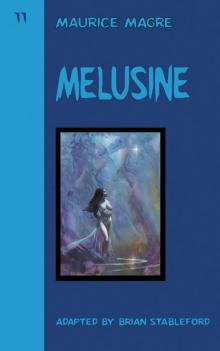 Melusine
Melusine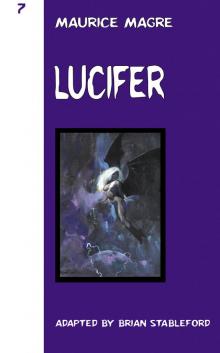 Lucifer
Lucifer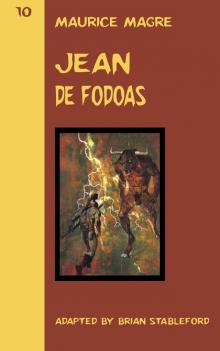 Jean de Fodoas
Jean de Fodoas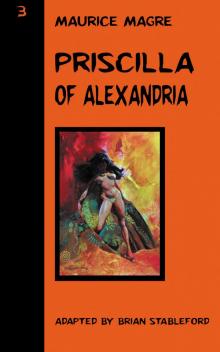 Priscilla of Alexandria
Priscilla of Alexandria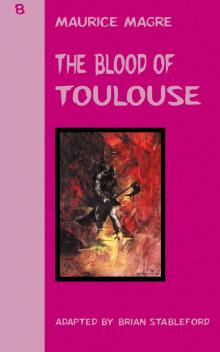 The Blood of Toulouse
The Blood of Toulouse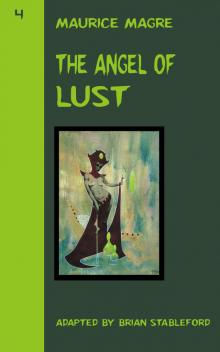 The Angel of Lust
The Angel of Lust